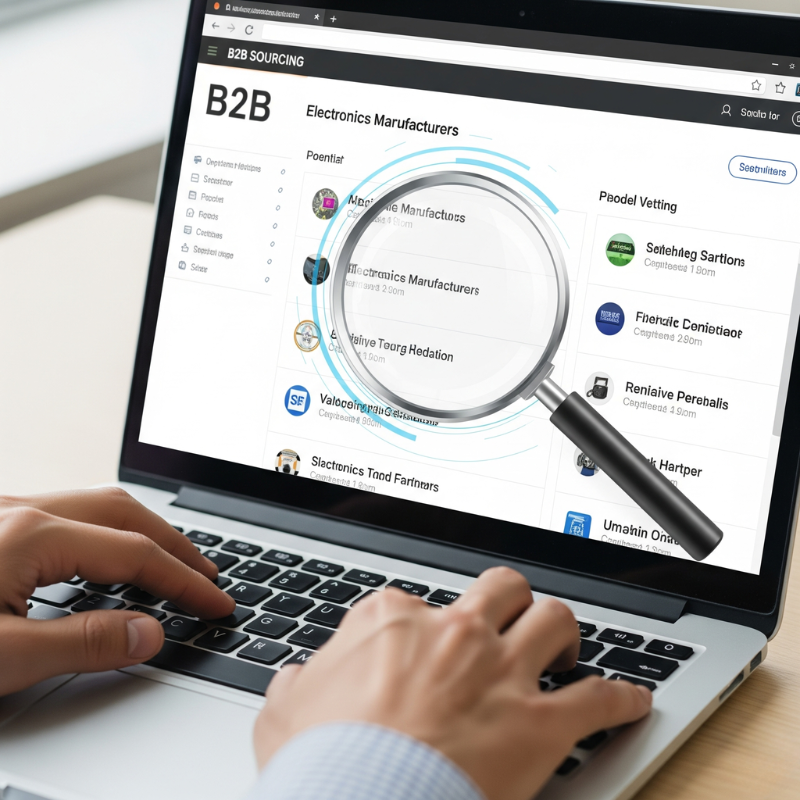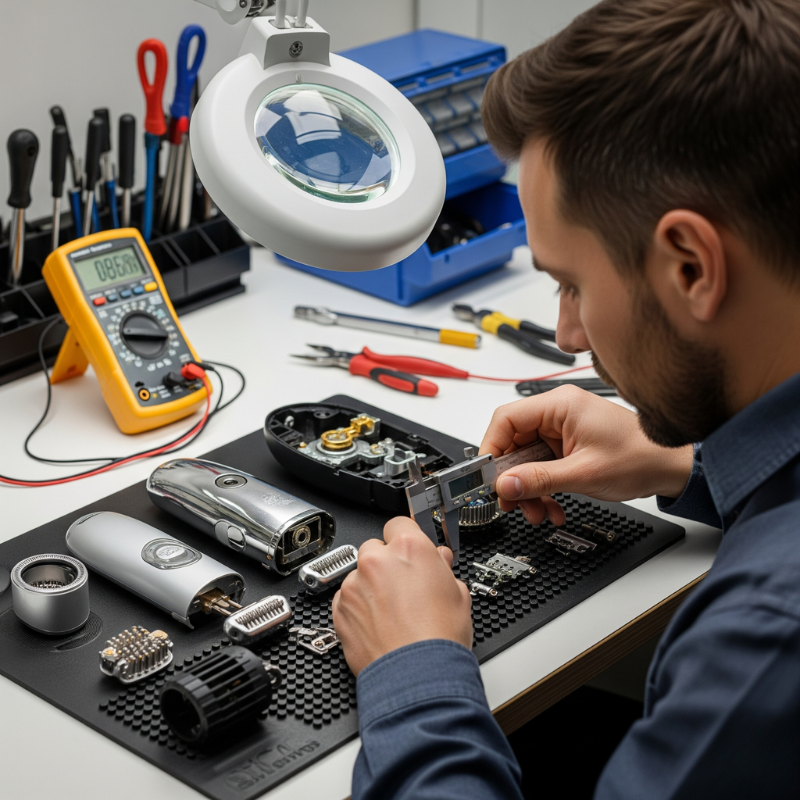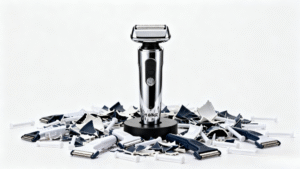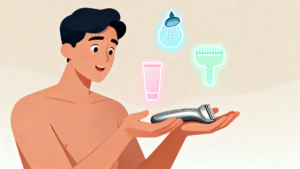Welcome to your B2B procurement guide. In the multi-billion-dollar global men’s grooming market, body grooming has evolved from a niche demand to an absolute mainstream trend. For brands looking to enter or expand in this sector, the greatest challenge is not marketing, but ensuring product quality, innovation, and a stable supply chain from the source. The core purpose of this ultimate guide is to teach you how to professionally identify, evaluate, and manage a top-tier body groomer manufacturer.
This is not just about procuring products; it is about building the foundation for your brand’s success. We will guide you through the entire process, from defining product strategy to final logistics delivery, ensuring you remain in control at every step of the complex international procurement process.
1. body groomer manufacturer: OEM Body Groomer or ODM Model?
Before contacting any suppliers, you must first clarify your business strategy. This will determine the cooperation model you are seeking: OEM or ODM. These two models differ significantly in terms of investment, time to market, and brand control.
OEM (Original Equipment Manufacturer):
You own the complete product design, specifications, and intellectual property (IP). You seek a factory to act as your “contract manufacturer,” producing the product strictly according to your drawings and requirements. This model grants you the highest level of product uniqueness and brand control.

ODM (Original Design Manufacturer):
- The factory possesses existing product molds, designs, and technology. You can select a product from their existing catalog, apply your brand logo, or make limited customizations (such as color, packaging, or material adjustments). This model allows you to enter the market at a lower cost and faster speed.
- To help you make the most informed decision, the table below clearly compares the key differences between the two models:
| Evaluation Dimension | OEM (Original Equipment Manufacturer) | ODM (Original Design Manufacturer) |
| Product Uniqueness | High – You can create a unique product in the market. | Low – Your product may be very similar to other brands. |
| Upfront Investment | Very High – Requires significant R&D and mold development costs. | Low – No R&D costs; mold fees are covered by the factory. |
| Time to Market | Long (Typically 9-18 months) | Short (Typically 3-6 months) |
| Intellectual Property (IP) | Owned by you – You have full rights to the design. | Owned by the factory – You only own the brand, not the product design. |
| Supplier Selection | More difficult – Requires a factory with strong technical and production capabilities. | Relatively easy – Many factories have existing product catalogs. |
| Suitable For | Established brands with strong funding, seeking long-term value and differentiation. | Startups or channel brands seeking quick market validation with a limited budget. |
2. Finding a needle in a haystack: How to efficiently search for and preliminarily screen personal care device manufacturers
After determining the cooperation model, the next step is to search for suppliers. The goal of this stage is to create a “long list” of 10-20 potential suppliers.
Online channels are your primary focus:
- Alibaba (https://www.google.com/search?q=Alibaba.com): The world’s largest B2B platform. Professional tip: Focus on the “Verified Supplier” and “Trade Assurance” badges, and carefully review their company profiles, years in operation, main products, and customer reviews.
- GlobalSources.com: Specializes in electronics and gifts, with generally high-quality suppliers, making it more suitable for finding professional personal care device manufacturers.
- Made-in-China.com: Another important B2B platform, particularly strong in industrial and electronic sectors with a robust supplier base.

Offline channels provide in-depth insights:
Industry trade shows: such as the Hong Kong Electronics Fair, Italy’s Cosmoprof, and the Canton Fair. Face-to-face interactions with sales representatives and hands-on examination of samples are the best ways to build trust and quickly assess professionalism.
Initial Screening Checklist:
When browsing through hundreds of suppliers, use the following checklist to quickly screen out unqualified candidates:
1) Core Business Alignment: Are they truly focused on producing electric grooming tools, or are they a “jack-of-all-trades” that does everything?
2) Factory Experience: How many years have they been in operation? How many years of export experience do they have?
3) Target Market: Which countries do their products primarily export to? If they have extensive export experience in European and American markets, it typically indicates a better understanding of quality and certification standards.
4) Website and Communication Professionalism: Is the company website professional? How quickly do they respond to your initial inquiry email, and how fluent and professional is their language?
5) Certification Information: Do they proactively display certifications such as ISO9001, BSCI, CE, and RoHS on their website?
3. In-depth due diligence: Evaluate key indicators of private label body groomer manufacturer
Select 3-5 of the best suppliers from the “long list” to enter the “short list” and conduct in-depth due diligence on them. This is the most critical step in the entire procurement process.
- Step 1: Request and Verify Company Information (Request for Information – RFI)
1) Business License
2) Scanned copies of major certification certificates
3) Factory address, scale, number of employees, and production capacity overview
- Step 2: Issue a professional Request for Quotation (RFQ)
A professional RFQ should include all of the following details to obtain comparable quotes:
1) Product specifications: motor speed, battery capacity (mAh), charging time, battery life, blade material (e.g., stainless steel, ceramic), waterproof rating (e.g., IPX7), accessory requirements (comb, charging cable, base, etc.).
2) Order Quantity: Clearly state your estimated annual procurement volume and minimum order quantity (MOQ).
3) Packaging Requirements: Color box design, inner tray material, instruction manual language, etc.
4) Certification Requirements: Clearly specify the certifications required for your target market, such as CE, RoHS, FCC.
5) Target Price: Provide a reasonable target price range to help suppliers assess whether they can meet your requirements.

- Step 3: Sample Evaluation
1) After receiving the sample, do not just look at its appearance. You need a systematic evaluation process:
2)Performance testing: Use it in actual use to see if the cutting is smooth, if it snags hair, and how loud it is.
3)Battery Testing: Fully charge the device and test whether the battery life matches the claimed specifications.
4)Water Resistance Testing: If the device claims to be water-resistant, perform immersion or rinsing tests.
5)Structure and Workmanship: Inspect the shell seams for uniformity, check for burrs, and assess the feel of the buttons.
Disassembly (Optional): If conditions permit, disassemble the device to examine internal workmanship, battery brand, and motor quality.
Step 4: Locking in Quality: The Importance of Quality Control for Electronics and Legal Contracts
Once you have selected a supplier, you need to put all verbal commitments into legally binding documents and establish a strict quality control system.
- Quality Control (QC)
A professional quality control system for electronics runs throughout the entire production process, not just the final inspection.
1) IQC (Incoming Quality Control): Incoming material inspection. All raw materials and components entering the production line (such as batteries, motors, PCBA boards) are inspected.
2) IPQC (In-Process Quality Control): Production process inspection. Quality control checkpoints are established at critical stages such as assembly, welding, and testing.
3) FQC/OQC (Final/Outgoing Quality Control): Final/shipping inspection. 100% of finished products are subjected to a full functional and visual inspection, and random sampling is conducted according to AQL (Acceptable Quality Limit) standards.
- Step 5: Compliance & Certifications
This is the “passport” that allows your product to be legally sold in your target market.
| Certification | Target Market | Description |
| CE | European Union (EU) | Indicates conformity with health, safety, and environmental protection standards for products sold within the EEA. |
| RoHS | European Union (EU) | Restriction of Hazardous Substances. Restricts the use of specific hazardous materials found in electrical and electronic products. |
| FCC | United States (USA) | Certifies that the electromagnetic interference from the device is under limits approved by the Federal Communications Commission. |
| REACH | European Union (EU) | Regulation on Registration, Evaluation, Authorisation and Restriction of Chemicals. |
| UKCA | United Kingdom (UK) | UK Conformity Assessed. The new UK product marking used for goods being placed on the market in Great Britain. |
| IP Rating | International | Ingress Protection Marking. Classifies the degree of protection against intrusion from solid objects and liquids. |
Step 6: Legal Contracts
Never rely solely on purchase orders (POs). A formal Manufacturing and Supply Agreement is essential and should include:
1) Detailed product specifications (as an attachment).
2) Pricing and payment terms (e.g., 30% deposit, 70% paid before shipment).
3) Production cycle (lead time).
4) Quality standards and AQL levels.
5) Intellectual property ownership and confidentiality clauses (NNN Agreement).
4.Breach of contract liability.
Strategic Planning: Managing the Final Stage of Sourcing Grooming Products
Contract signing, deposit payment, and production commencement. However, your work is far from complete.
1) Production Follow-Up: Require suppliers to provide weekly production progress reports (with photos or videos).
2) Pre-Production Sample Confirmation: Before mass production begins, require suppliers to send a “pre-production sample” or “golden sample” produced entirely on the production line, which will serve as the final acceptance standard.

3)Pre-Shipment Inspection (PSI): This is your final line of defense. You can hire an independent third-party inspection company (such as SGS, Intertek, or TUV) to conduct random inspections at the factory according to your standards and AQL levels before final payment and shipment, and issue a detailed inspection report.
4) Logistics and Transportation: Collaborate with a freight forwarder to handle the entire process from picking up goods from the factory, customs clearance, sea/air freight, to final destination customs clearance and delivery. Ensure that Incoterms (International Commercial Terms) are clearly defined with the supplier, with the most common being FOB (Free On Board) or EXW (Ex Works).
5.Become a strategic partner, not just an ordinary buyer
Successfully sourcing grooming products is a systematic process that tests your patience, attention to detail, and professionalism. The true goal is not to find the cheapest supplier, but to find a strategic partner who can grow with you, understand your brand vision, and align with you in terms of quality, innovation, and reliability.

By following the steps outlined in this guide and investing the necessary time and resources into due diligence, you will minimize risks and lay a solid foundation for building a successful grooming brand.





